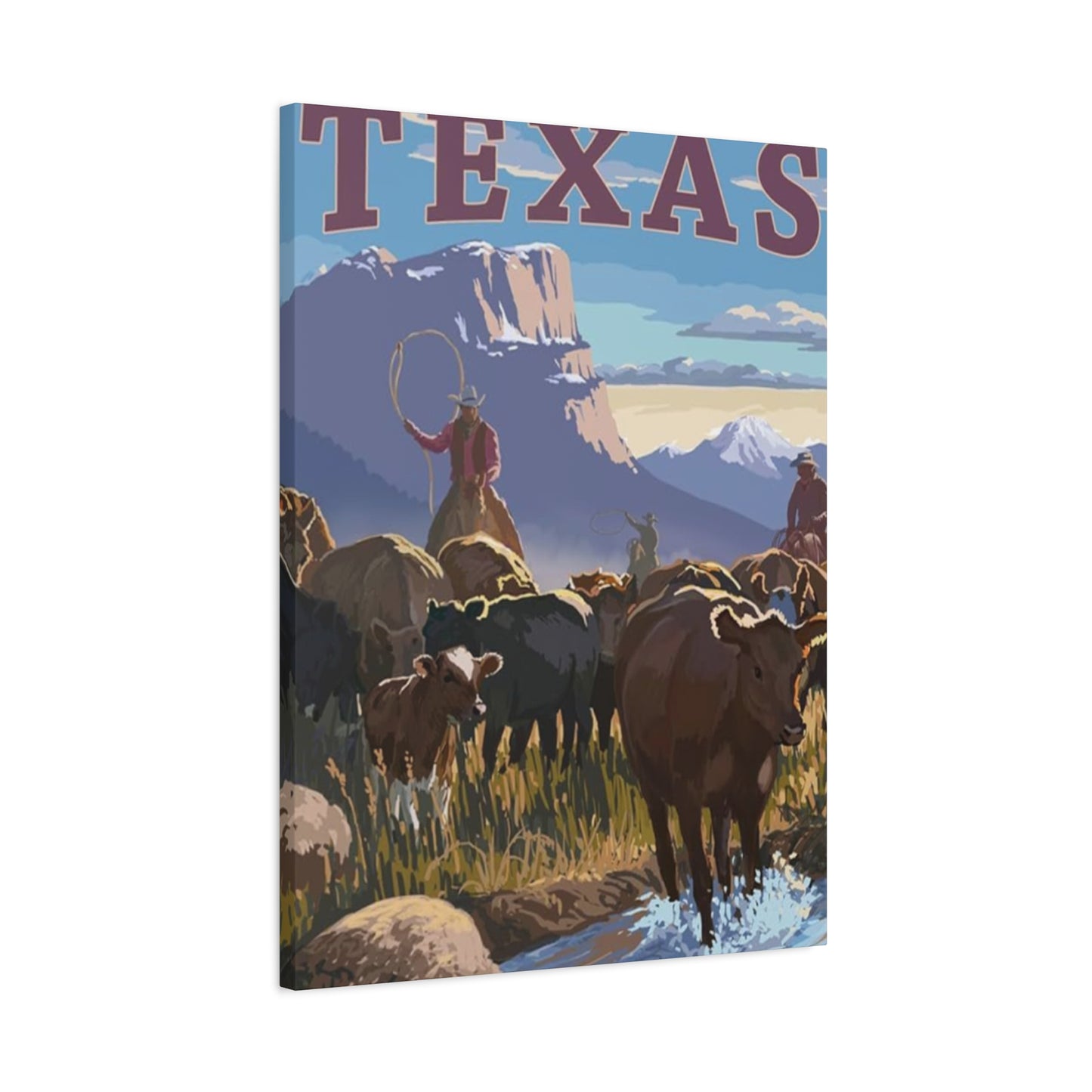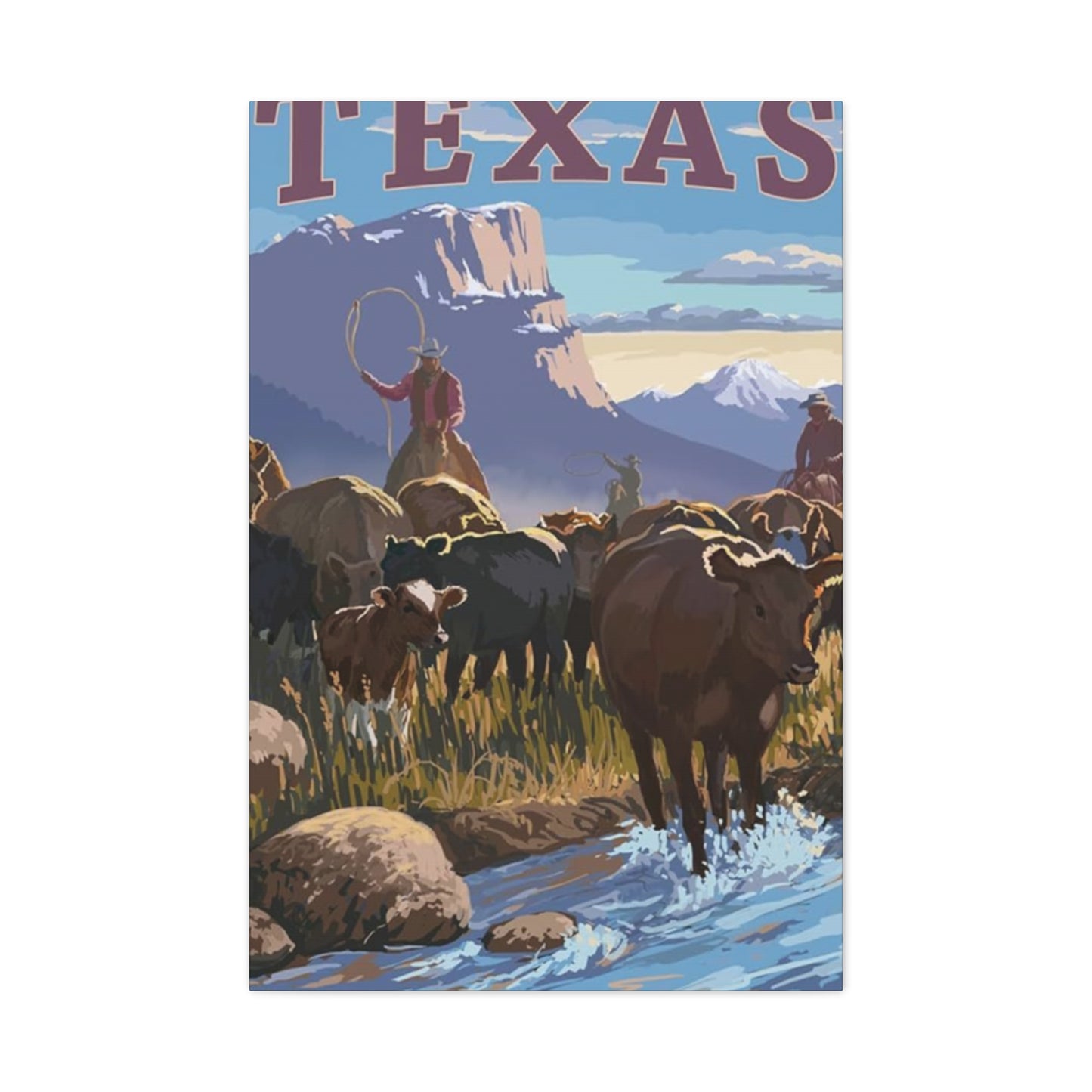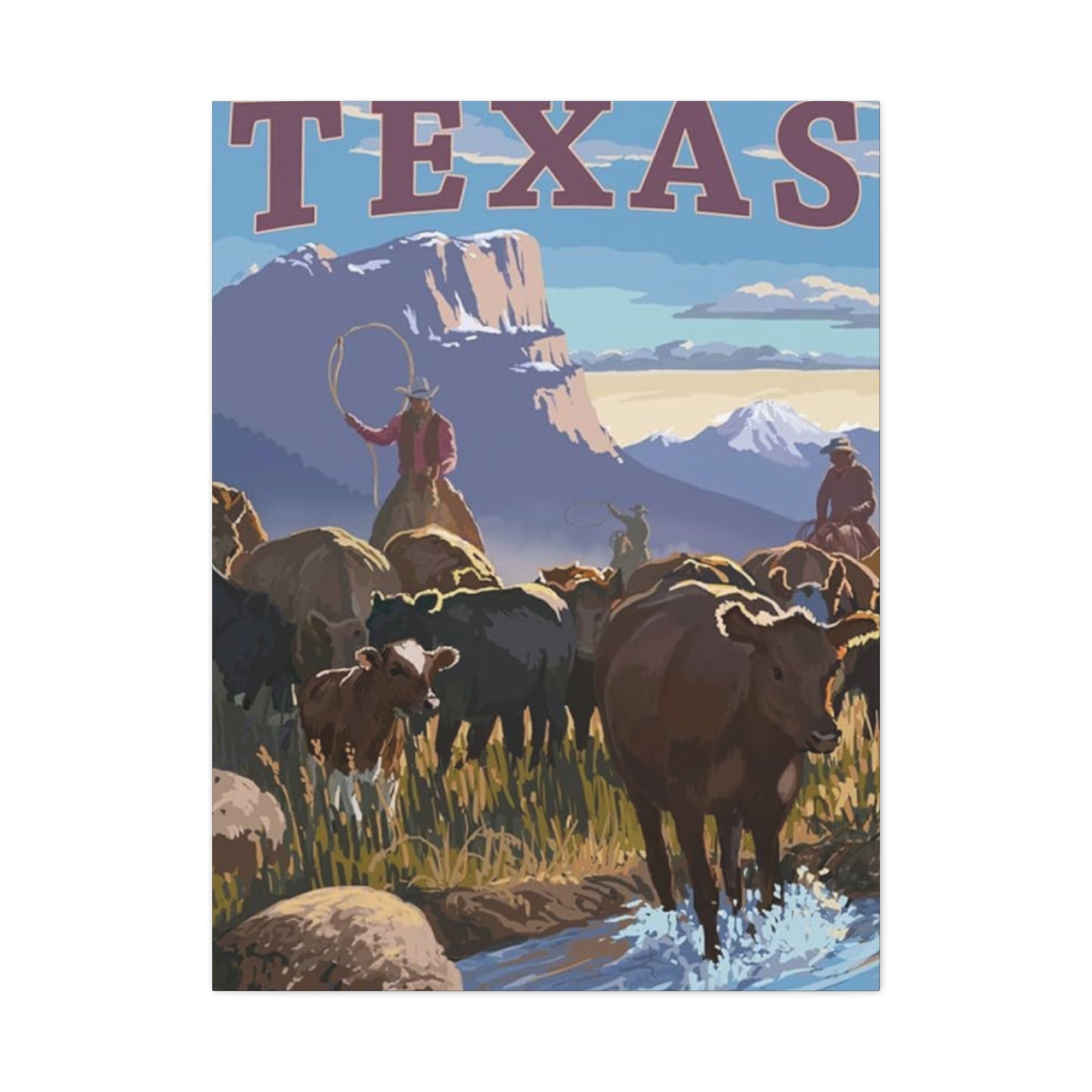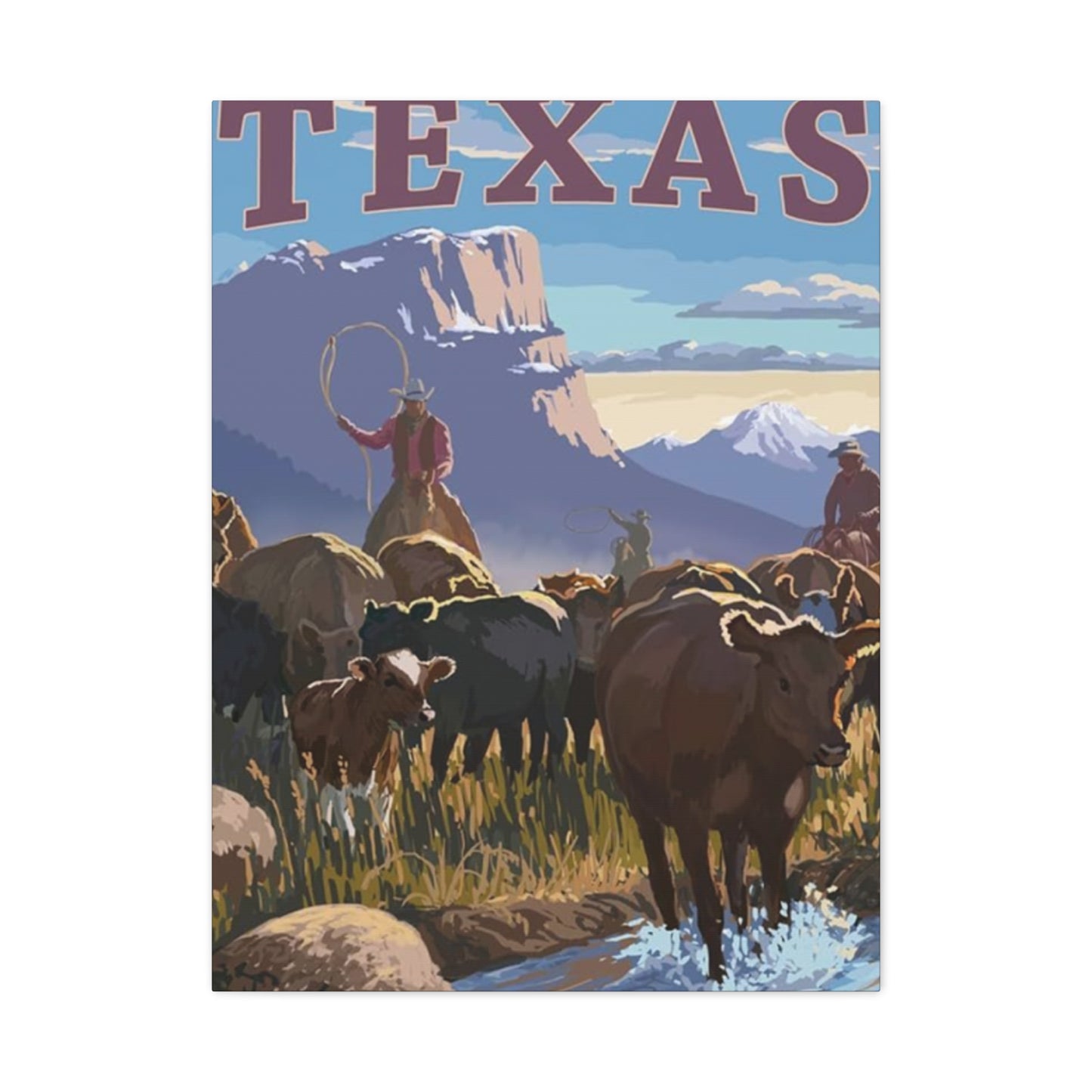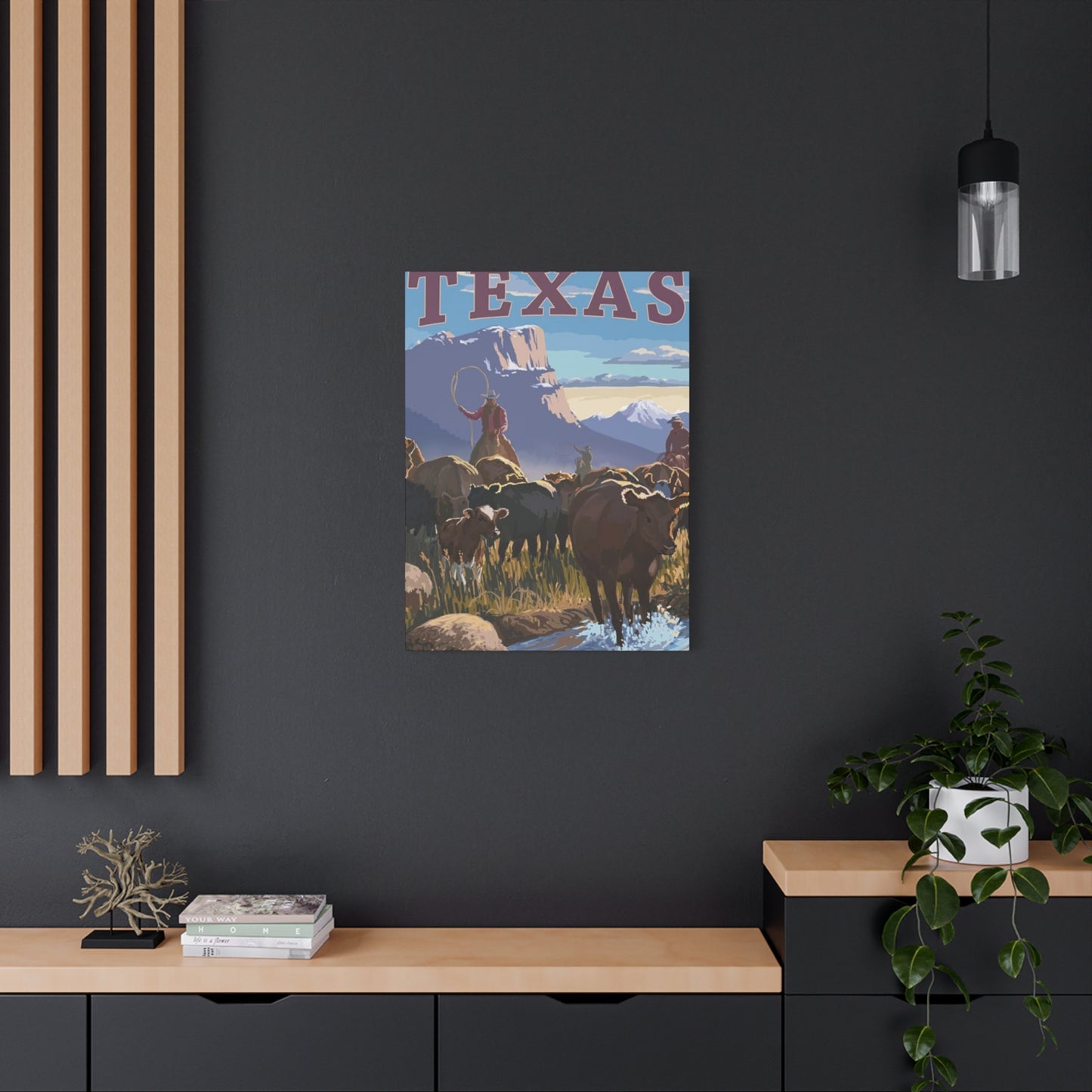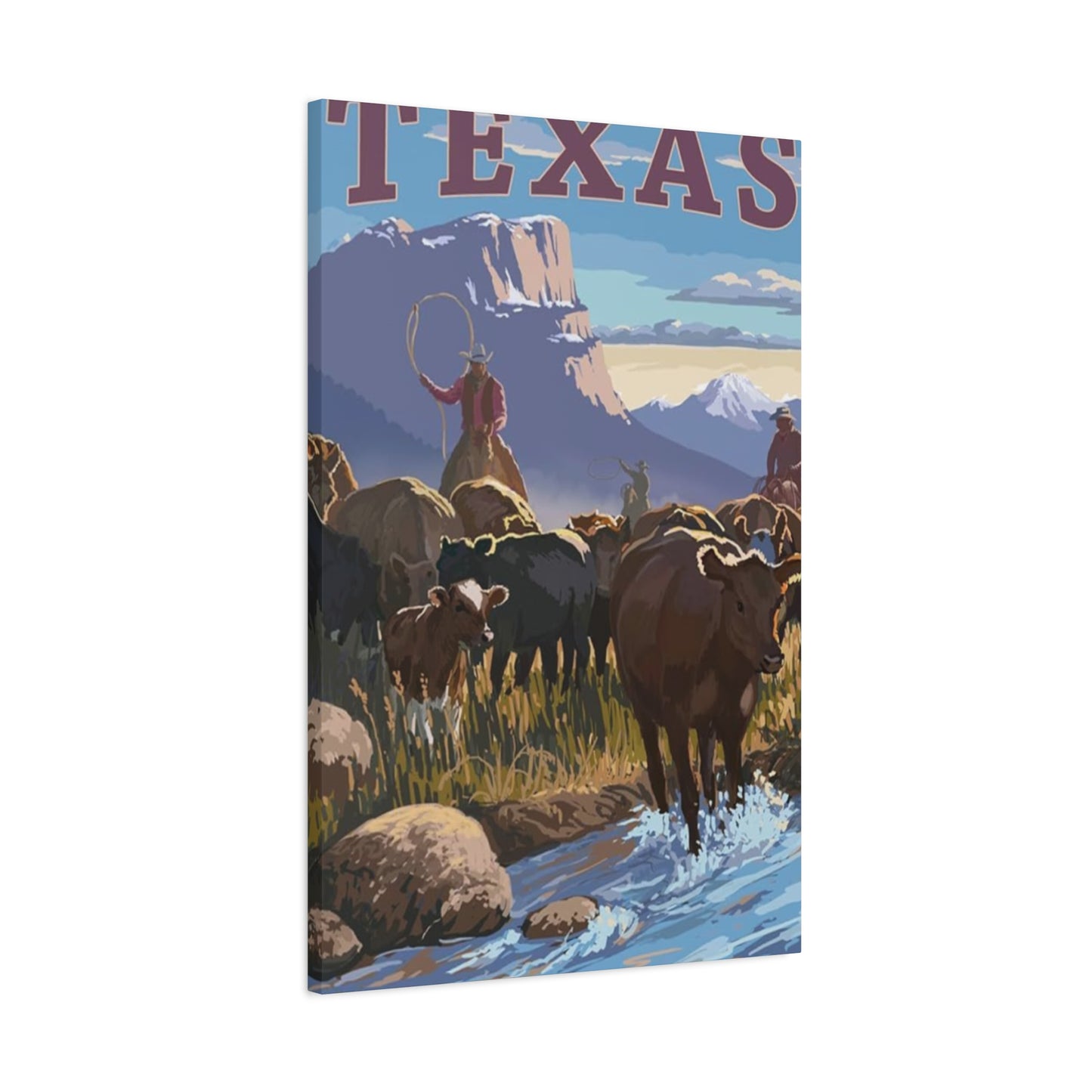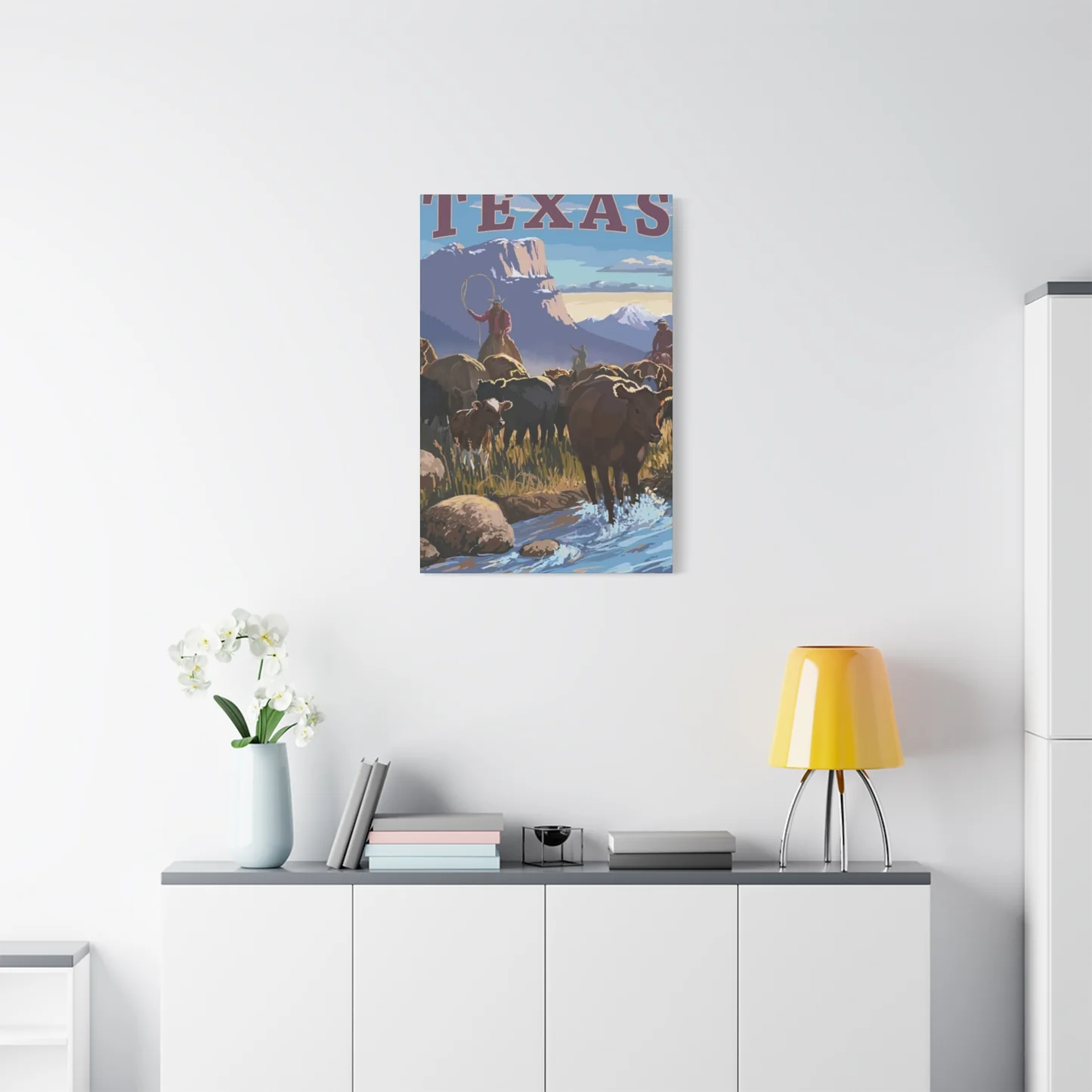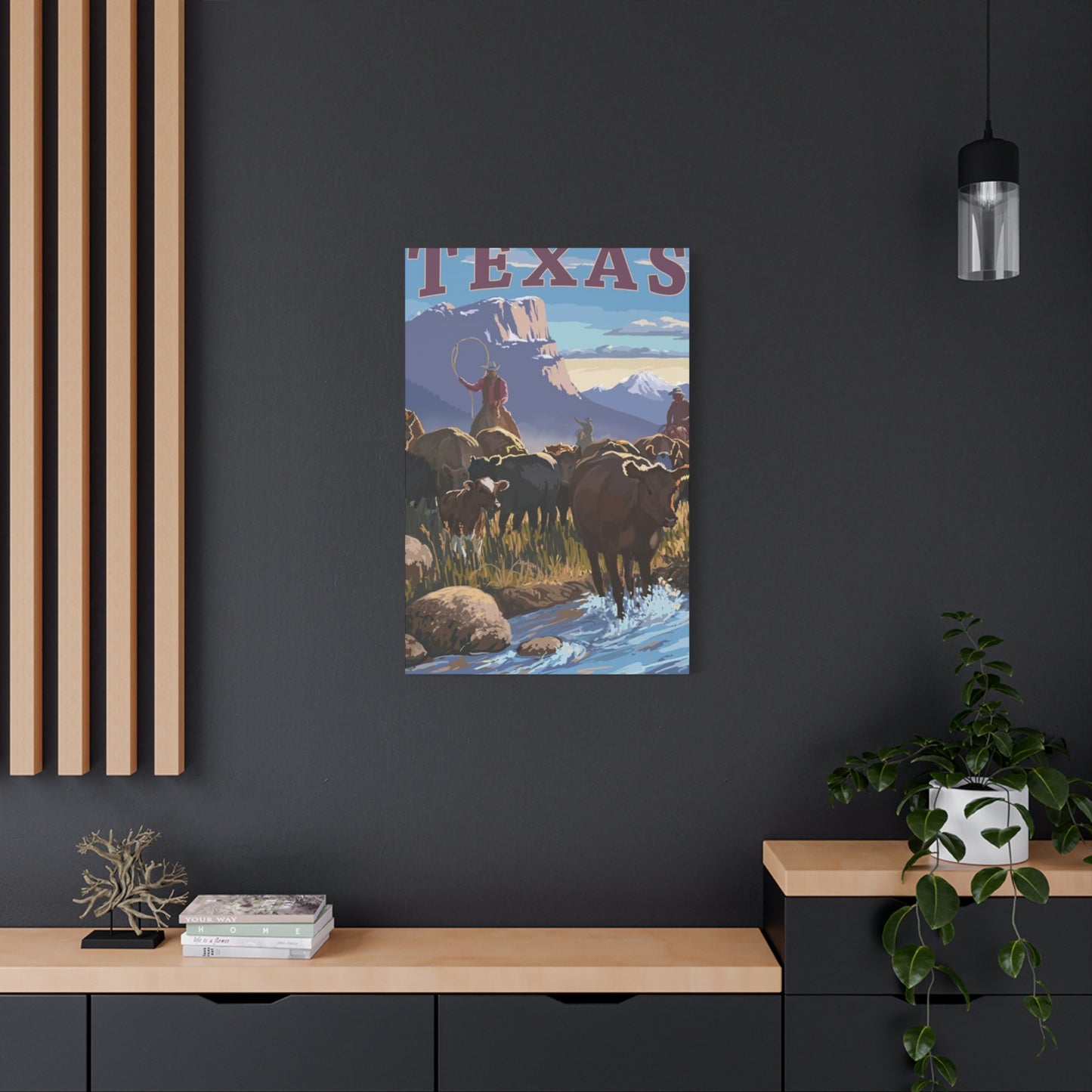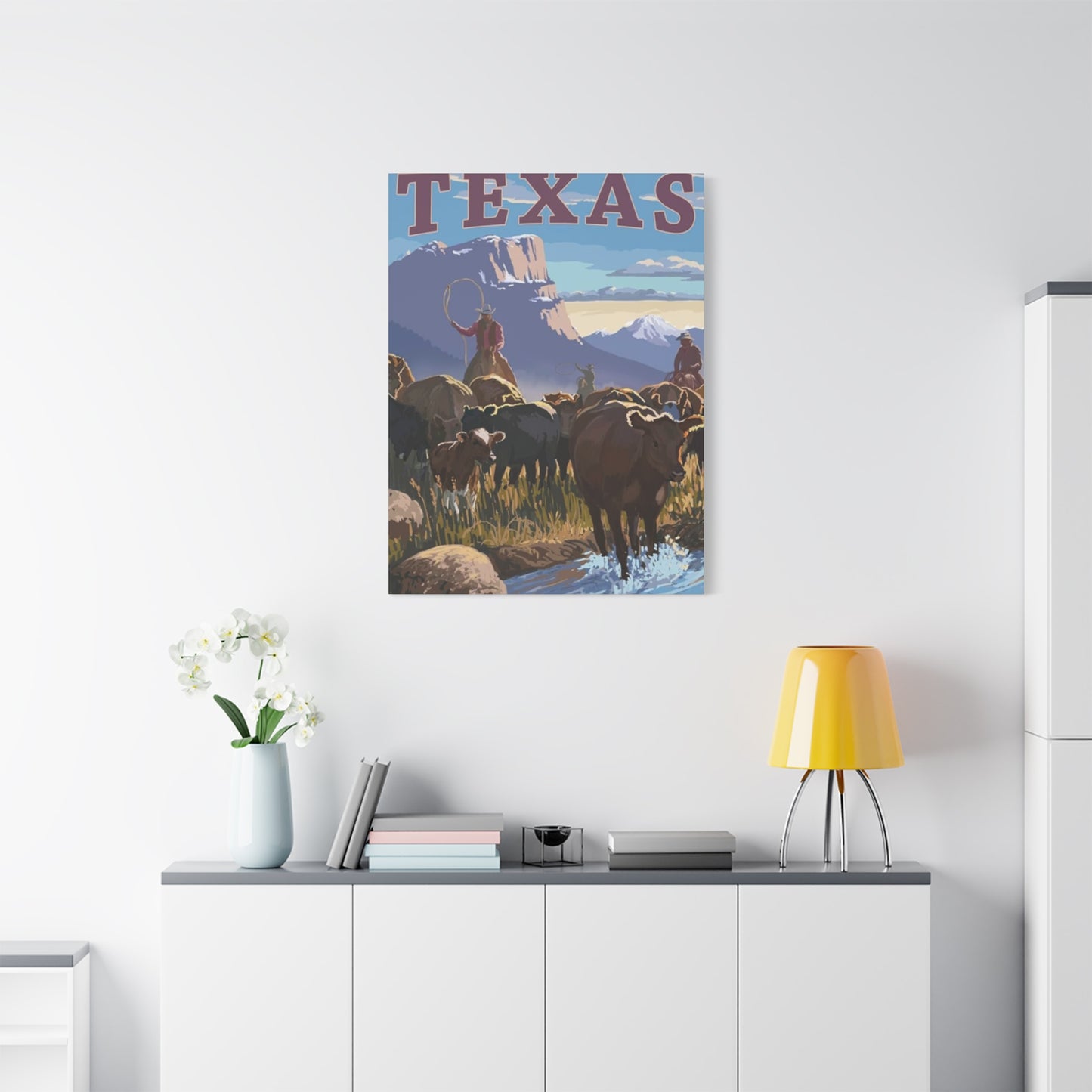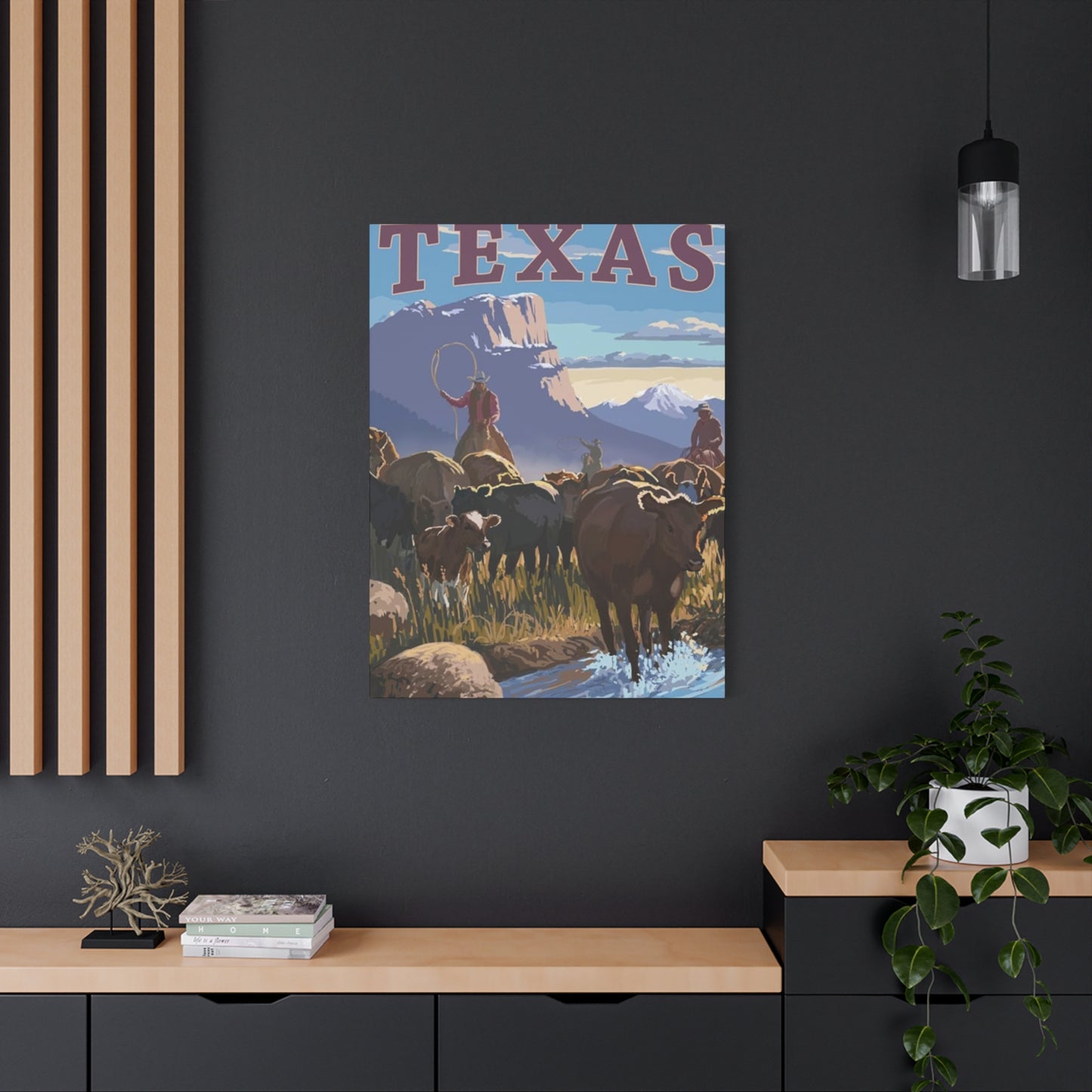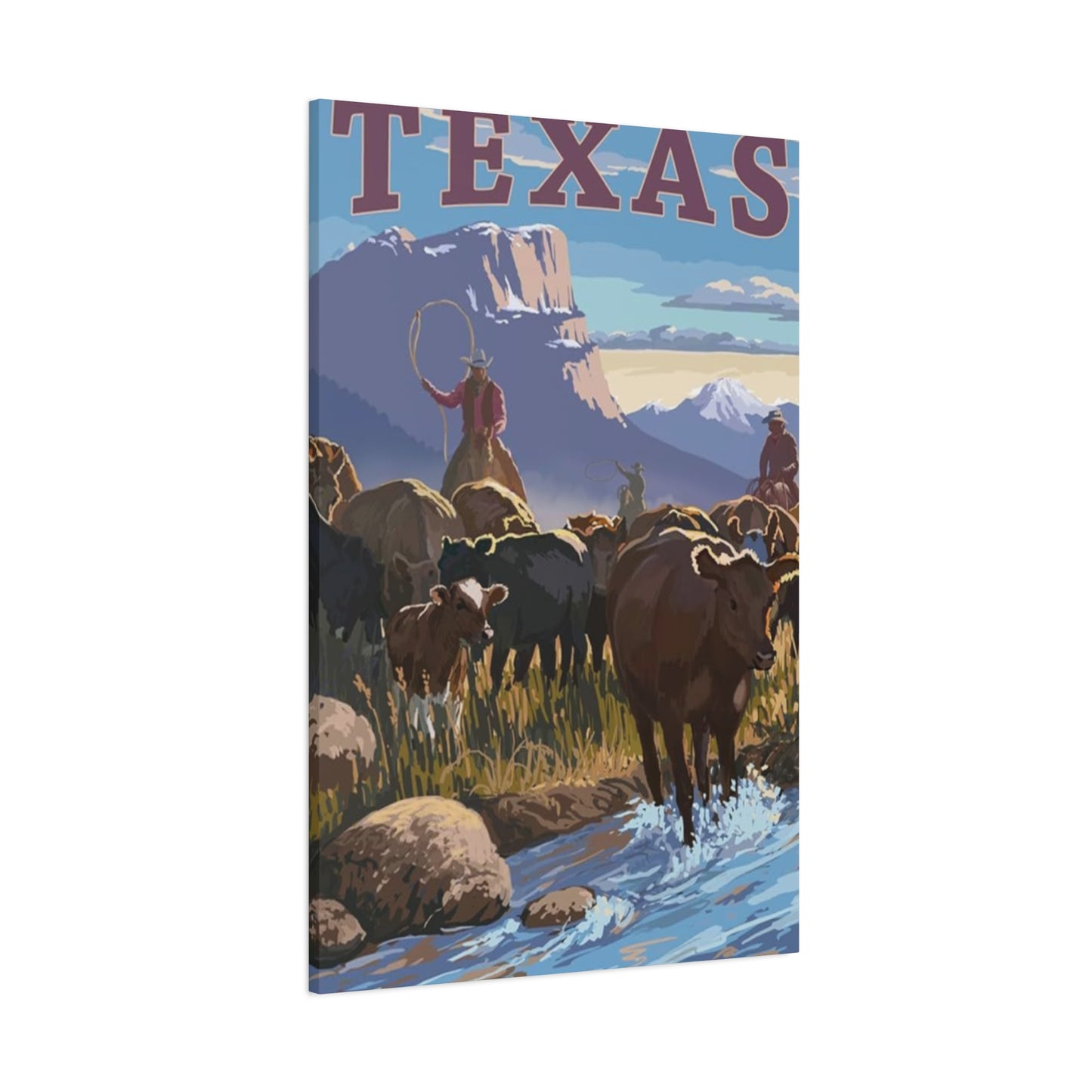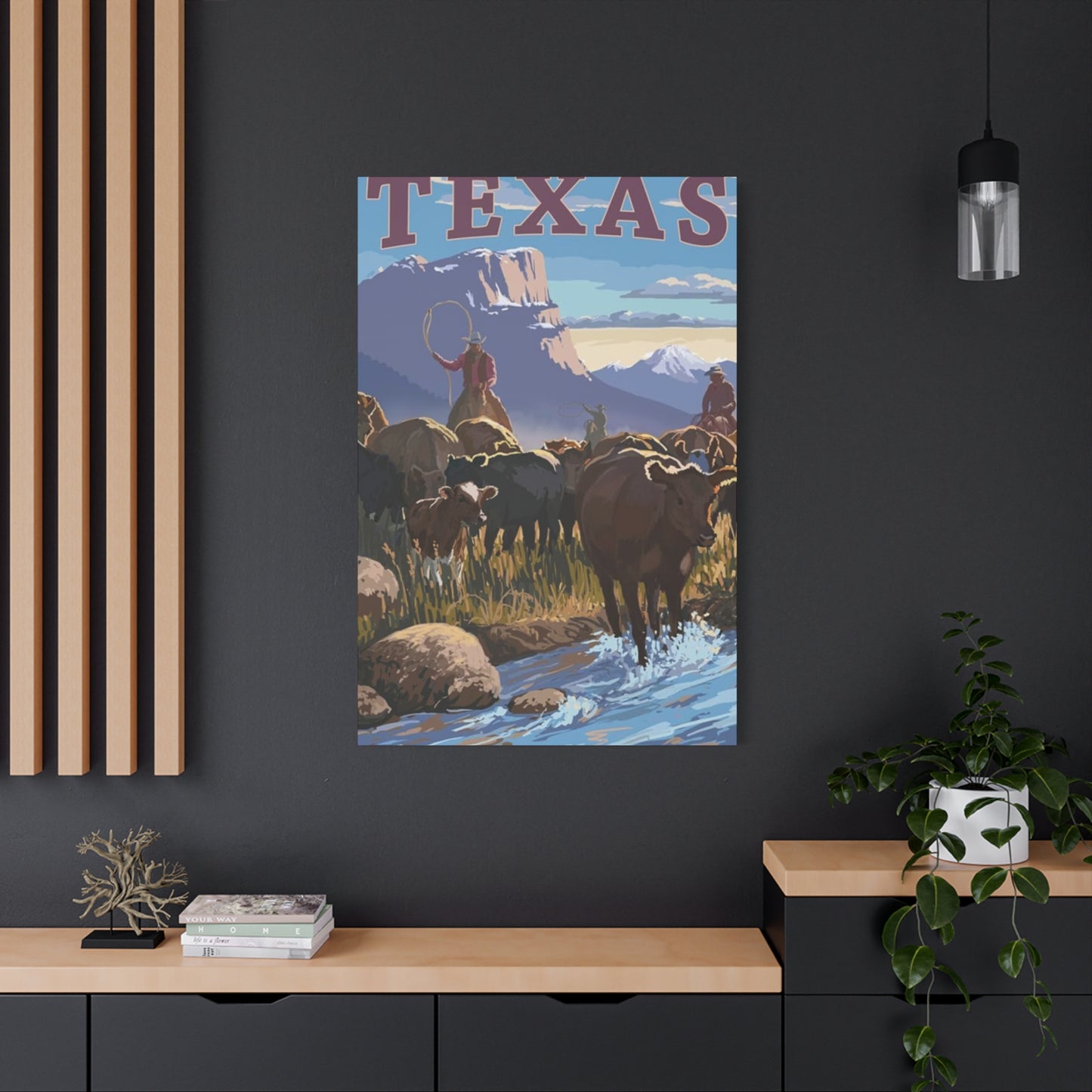Discover the Beauty of Texas National Parks Wall art Through Stunning Wall Decorations
Texas stands as home to remarkable natural landscapes that inspire artists and nature enthusiasts alike. The state's protected wilderness areas showcase dramatic canyons, ancient rock formations, desert vistas, and diverse ecosystems that deserve celebration beyond their physical boundaries. Bringing these majestic scenes into living spaces through carefully selected wall decorations allows people to connect with nature's grandeur while enhancing their home or office environments.
Why Natural Landscape Imagery Enhances Interior Spaces
The human connection to natural environments runs deep in our evolutionary history. Scientific research demonstrates that viewing natural landscapes can reduce stress levels, lower blood pressure, and improve overall mental wellbeing. When people surround themselves with images of mountains, forests, deserts, and waterways, they create sanctuary spaces that promote relaxation and contemplation.
Interior designers frequently recommend incorporating nature-themed artwork because these pieces serve as focal points that anchor room designs while maintaining timeless appeal. Unlike trendy decorative elements that quickly become dated, landscape imagery transcends passing fashions. A well-chosen piece depicting wilderness scenery remains relevant and appreciated across decades, making it a worthwhile investment for any space.
The colors found in natural settings—earth tones, sky blues, sunset oranges, and forest greens—coordinate effortlessly with various design schemes. Whether someone prefers minimalist modern aesthetics, rustic farmhouse charm, or eclectic bohemian styles, landscape artwork adapts to complement existing furnishings and color palettes. This versatility makes nature-themed decorations particularly valuable for those who update their interior designs periodically.
Beyond aesthetic considerations, displaying landscape imagery serves educational purposes, particularly in homes with children. Young people who grow up surrounded by representations of natural wonders develop curiosity about geography, ecology, and environmental conservation. These visual reminders spark conversations about diverse ecosystems, wildlife habitats, and the importance of preserving wild places for future generations.
Exploring Big Bend's Dramatic Desert Landscapes Through Artistic Representation
The Chihuahuan Desert region showcases some of North America's most striking geological formations. This remote wilderness area features towering canyon walls, winding river corridors, and mountain ranges that create dramatic contrasts between shadow and light. Artists who capture these scenes on canvas or through photography preserve moments of extraordinary beauty that many people never witness in person.
The Santa Elena Canyon stands as one of the most photographed locations within this protected area. Sheer limestone cliffs rise fifteen hundred feet above the river below, creating a natural corridor that photographers find endlessly compelling. The way sunlight strikes these ancient rock faces changes throughout the day, producing varied moods from dawn's soft pastels to midday's harsh contrasts to sunset's warm golden tones. Artwork featuring this iconic canyon brings dramatic vertical elements into interior spaces, drawing the eye upward and creating impressions of grandeur.
The Chisos Mountains provide another source of artistic inspiration within this desert wilderness. These peaks rise like islands from the surrounding flatlands, creating unique ecosystems where temperate species thrive at higher elevations while desert-adapted plants and animals occupy lower zones. The mountains' distinctive profiles, particularly the formation known as Casa Grande, create recognizable silhouettes that appear in countless artistic interpretations. Displaying these mountain scenes adds depth and layering to wall arrangements, particularly when paired with complementary pieces showing different perspectives or seasonal variations.
Desert sunset imagery from this region captures the spectacular color displays that occur when the sun descends toward the western horizon. The clear desert air allows for brilliant displays of orange, pink, purple, and red hues that painters and photographers work to capture authentically. These warm-toned pieces work particularly well in spaces where people gather for evening relaxation, as the colors evoke feelings of warmth and tranquility associated with day's end.
The stark beauty of desert landscapes appeals to those who appreciate minimalist aesthetics. The clean lines of distant horizons, the sculptural qualities of weathered rock formations, and the simple elegance of desert vegetation create compositions that feel uncluttered and serene. Artwork capturing these elements brings calm sophistication to modern interiors where simplicity and negative space play important roles.
Canyon Country Vistas That Define Wilderness Character
The Palo Duro formation represents the second largest canyon system in the United States, yet remains lesser known than its Arizona counterpart. This massive geological feature stretches for over one hundred miles, with depths reaching eight hundred feet in places. The exposed rock layers display a rainbow of colors—reds, oranges, yellows, and purples—created by different mineral compositions and oxidation processes occurring over millions of years.
Artists drawn to this location capture the unique character of these multicolored cliff faces. The famous Lighthouse formation, a standalone rock pillar that rises from the canyon floor, appears frequently in artistic works because of its distinctive shape and the way it catches light throughout the day. This iconic structure creates a strong focal point in artwork, giving viewers a specific feature to anchor their attention while appreciating the broader landscape context.
The canyon's changing moods throughout seasons provide diverse artistic opportunities. Summer storms build dramatic cloud formations above the canyon rim, creating dark skies that contrast sharply with sunlit rock faces below. Autumn brings golden grasses that soften the landscape's appearance, while winter occasionally dusts the upper elevations with snow, creating rare and striking color combinations. Spring wildflower blooms add unexpected splashes of yellow, purple, and pink to foreground compositions.
Panoramic views from rim overlooks showcase the canyon's immense scale. These sweeping vistas work particularly well as large-format prints that span significant wall space, creating immersive visual experiences that transport viewers to these elevated perspectives. The sense of open space and freedom conveyed by these wide-angle compositions makes them especially suitable for urban dwellings where residents seek visual escape from dense built environments.
The interplay of light and shadow within canyon country creates constantly shifting patterns across rock faces and valley floors. Morning light illuminates eastern-facing cliffs while leaving western walls in shadow, then reverses this pattern as afternoon progresses. Artists who understand these lighting dynamics create works that convey specific times of day, allowing viewers to experience the canyon's rhythms without leaving their homes.
Coastal Ecosystems Where Land Meets Sea
The barrier island system along the Gulf coastline protects fragile ecosystems where terrestrial and marine environments interact. Long stretches of undeveloped beach, coastal dunes, and grasslands support diverse wildlife populations while providing scenic beauty that attracts nature photographers and painters. The horizontal emphasis of coastal landscapes creates calming compositions that work well in bedrooms, meditation spaces, and other areas designed for relaxation.
Sunrise over Gulf waters produces spectacular light shows as the sun emerges from the horizon, painting sky and water in shades of pink, orange, and gold. Artists capturing these moments preserve the peaceful beauty of dawn on deserted beaches, with gentle waves rolling toward shore and seabirds beginning their morning activities. These soft-toned pieces contribute tranquil energy to interior spaces, making them popular choices for master bedrooms and spa-like bathrooms.
Coastal dune systems feature sculptural sand formations held in place by specialized vegetation. Sea oats, with their distinctive seed heads, sway gracefully in ocean breezes, creating movement and texture that photographers work to freeze in compelling compositions. The contrast between smooth sand surfaces and the organic forms of dune plants provides visual interest that translates well to two-dimensional artwork.
Wildlife viewing opportunities along these shores inspire artists to include birds, sea turtles, and other creatures in their coastal compositions. Long-legged wading birds stalking through shallow waters, pelicans diving for fish, and dolphins surfacing offshore add life and narrative elements to landscape scenes. These animal inclusions make artwork particularly appealing to nature enthusiasts and families with children interested in marine biology.
Stormy weather along the coast creates dramatic artistic opportunities as well. Dark clouds rolling in from the Gulf, waves crashing against shore with increased energy, and wind-bent vegetation all convey nature's power and unpredictability. These moodier pieces suit spaces where dramatic impact is desired, such as dining rooms, home offices, or entertainment areas.
Preserving Historical Landscapes Through Artistic Documentation
Archaeological sites within protected areas preserve evidence of human habitation spanning thousands of years. Rock shelters containing ancient pictographs and petroglyphs demonstrate that people have long been inspired to create visual art depicting their environments and experiences. Contemporary artists working in these locations continue this tradition, documenting landscapes that hold both natural and cultural significance.
The paintings created by indigenous peoples on rock walls provide fascinating subjects for modern artistic interpretation. While reproducing these ancient artworks directly would be inappropriate, photographers and painters can document the settings where these cultural treasures exist, showing how rock overhangs, springs, and other natural features attracted human settlement. These pieces remind viewers that protected wilderness areas preserve not just natural features but also irreplaceable cultural heritage.
Historic ranch structures and pioneer settlements within certain protected areas tell stories of European American settlement patterns and the challenges people faced adapting to harsh environments. Weathered wooden buildings, stone ruins, and abandoned homesteads create nostalgic compositions that appeal to those interested in frontier history and Western heritage. These human elements within natural landscapes add narrative layers that purely wilderness scenes may lack.
The agricultural landscapes that preceded park establishment in some areas still show evidence of past land uses. Irrigation ditches, stone fences, and orchards planted by early settlers persist in various states of decay and reclamation by native vegetation. Artists documenting these transitional landscapes capture moments in ongoing ecological processes as nature gradually reclaims human-modified terrain.
Military history intersects with natural landscapes at certain locations where forts and defensive positions were established. The strategic value of high ground, water sources, and natural corridors becomes apparent when viewing these sites, and artwork depicting these locations gains additional interest from their historical contexts. Collectors interested in military history often seek landscape artwork that depicts these historically significant locations.
Seasonal Transformations in Wilderness Settings
Desert environments undergo subtle but meaningful changes across seasons. Spring brings dramatic wildflower displays when winter rains have been adequate, transforming typically brown and gray landscapes into carpets of yellow, purple, pink, and orange blooms. Artists who capture these brief flowering periods preserve moments of exceptional beauty that last only weeks before summer heat ends the display.
The desert plants themselves change appearance seasonally. Ocotillo plants, normally appearing as bundles of dead sticks, burst into leaf and bloom following rains, demonstrating desert life's remarkable adaptability. Prickly pear cacti produce vivid yellow, orange, or pink flowers in spring, followed by colorful fruits that attract wildlife. Yucca species send up tall flower stalks crowned with cream-colored blossoms. These seasonal plant changes add variety to desert landscape imagery, allowing collectors to choose pieces reflecting different times of year.
Summer monsoon season brings dramatic weather patterns to certain regions. Towering cumulus clouds build through afternoon heat, sometimes developing into spectacular thunderstorms that dump brief but intense rainfall. Lightning strikes illuminate darkened skies while rainbows often appear as storms pass. Artists who brave these conditions capture nature's raw power and beauty in images that convey drama and excitement.
Autumn in higher elevation areas brings deciduous tree color changes that create unexpected splashes of gold and orange among evergreen vegetation. Bigtooth maples, cottonwoods, and aspens transform canyons and mountain valleys into seasonal color showcases. These autumn scenes appeal to those who associate fall colors with natural beauty but may not realize these displays occur in southwestern landscapes.
Winter transforms certain wilderness areas dramatically. Snow dusting mountain peaks creates stark black-and-white contrasts that appeal to photographers seeking graphic compositions. Frost coating desert plants creates delicate crystalline structures that sparkle in morning light. The low angle of winter sun produces long shadows and warm lighting that differs markedly from summer's harsh overhead illumination. Winter landscape imagery offers cooling visual relief during hot months and can make heated indoor spaces feel more comfortable.
Night Sky Splendor in Dark Sky Locations
Remote wilderness areas far from urban light pollution offer extraordinary stargazing opportunities. The Milky Way galaxy stretches across dark skies like a cosmic river, creating awe-inspiring displays that most people living in cities never witness. Astrophotographers working in these locations capture stunning images showing landscapes beneath star-filled skies, creating compositions that connect earthbound terrain with celestial wonders.
The Milky Way's galactic core, visible during certain months, creates a particularly bright and detailed band across the sky. When photographed above iconic landscape features, this cosmic backdrop adds surreal beauty to familiar scenes. Desert rock formations silhouetted against starry skies create otherworldly compositions that appeal to those interested in astronomy, science fiction aesthetics, or simply the mystery and wonder of nighttime wilderness.
Meteor showers occurring throughout the year provide opportunities for capturing shooting stars streaking across the heavens. Patient photographers who set up cameras for long exposures during peak meteor activity nights create images showing multiple meteor trails against star backgrounds. These dynamic compositions convey the constant motion and activity occurring in space around our planet.
The aurora borealis rarely extends far enough south to be visible in most regions, but geomagnetic storms occasionally produce displays that reach lower latitudes than typical. Photographers who capture these rare events create highly sought-after images documenting exceptional natural phenomena. The green, red, and purple curtains of auroral light add magical elements to landscape compositions.
Time-lapse photography techniques allow artists to show star motion across the night sky. Star trail images created by leaving camera shutters open for extended periods or stacking multiple exposures show circular arcs tracing stellar paths around celestial poles. These technical achievements create stunning abstract patterns while remaining firmly rooted in natural phenomena, bridging artistic expression and scientific documentation.
Wildlife Habitats Captured Through Artistic Lenses
Protected wilderness areas support diverse animal populations that live according to ancient patterns within their native habitats. While wildlife photography requires specialized skills and equipment, the resulting images provide intimate views of creatures in their natural settings. These wildlife-inclusive landscapes appeal to nature lovers who appreciate seeing animals within ecosystem contexts rather than isolated against blank backgrounds.
Desert bighorn sheep inhabiting rugged canyon country demonstrate remarkable adaptations for surviving in harsh environments. These sure-footed animals navigate sheer cliff faces with apparent ease, seeking sparse vegetation and water sources while avoiding predators. Images showing bighorn sheep posed on rocky outcrops against expansive canyon backgrounds combine wildlife portraiture with landscape photography, creating pieces with multiple points of interest.
Bird diversity in wilderness areas attracts ornithologists and bird watchers from around the world. Raptors including golden eagles, peregrine falcons, and various hawk species soar above open country, using keen eyesight to locate prey below. Artists who capture these predatory birds in flight against dramatic landscape backgrounds create dynamic compositions showing predator-prey relationships and ecological connections.
Javelinas, also called collared peccaries, roam desert and brushland environments in social groups. These pig-like mammals appear frequently in wildlife photography because they tolerate human presence better than many species and are active during daylight hours. Images showing javelina families moving through typical desert vegetation tell stories about animal behavior and habitat requirements.
Reptiles including various lizard species and snakes play important ecological roles as both predators and prey. Western diamondback rattlesnakes, Texas horned lizards, and collared lizards appear in wildlife photographs that document species diversity. While some people feel uncomfortable with reptile imagery, others appreciate these creatures' important positions in food webs and their remarkable adaptations for temperature regulation and water conservation.
Nocturnal mammals like ringtails, foxes, and bats present challenges for wildlife photographers but reward persistent efforts with unique images showing creatures that most daytime visitors never encounter. Night photography techniques including infrared cameras and flash setups reveal the hidden nighttime activity occurring within wilderness areas after humans typically leave.
Geological Wonders That Tell Earth's Ancient Stories
Rock formations visible in certain protected areas preserve geological histories spanning hundreds of millions of years. Sedimentary layers laid down in ancient seas, volcanic activity from long-extinct volcanoes, and erosional processes that carved today's landscapes all left visible evidence that geologists read like history books. Artists capturing these formations help viewers appreciate deep time and the dynamic processes that shape planetary surfaces.
Folded and faulted rock layers demonstrate powerful tectonic forces that bent and broke rigid stone. Anticlines and synclines create wave-like patterns in cliff faces, while fault lines mark places where earth movements offset once-continuous layers. These geological features create strong diagonal and curved elements in compositions, adding visual dynamism to landscape artwork.
Differential erosion creates varied topography as harder rock layers resist weathering while softer materials erode away more quickly. This process produces cap rocks protecting underlying softer layers, creating distinctive stepped cliff profiles and isolated pillars standing apart from surrounding terrain. These sculptural landforms attract photographers and painters who appreciate nature's ability to create forms suggesting deliberate design while following only physical laws.
Fossils preserved in sedimentary rocks provide evidence of ancient life forms that inhabited very different environments from those existing today. Marine fossils found in rocks now located thousands of feet above sea level demonstrate dramatic changes in land elevation over geological time. Artists who include these details in their work add educational elements that spark viewer curiosity about earth history.
Caves and solution features formed by water dissolving limestone bedrock create underground worlds that occasionally become visible through collapsed roofs or eroded cliff faces. These features demonstrate chemical weathering processes and groundwater's role in shaping landscapes. While underground cave photography requires specialized techniques and permits, surface exposures of these features provide accessible subjects for artists.
Volcanic features including dikes, lava flows, and volcanic necks appear in certain regions where ancient volcanic activity left permanent marks on the landscape. These dark igneous rocks contrast sharply with lighter-colored sedimentary formations, creating natural color patterns that artists emphasize in their compositions. The stories these features tell about earth's fiery past add drama to static landscape scenes.
Water Features Bringing Life to Desert Environments
Springs and seeps where groundwater reaches the surface create oases in otherwise arid landscapes. These vital water sources support lush vegetation, attract diverse wildlife, and historically determined where humans could survive in harsh environments. Artists capturing these green zones surrounded by drier terrain create compositions showing dramatic ecological contrasts within single frames.
River corridors flowing through desert country create linear oases supporting riparian vegetation quite different from surrounding upland plant communities. Cottonwoods, willows, and sycamores growing along watercourses provide shade, nesting sites for birds, and cooling effects that moderate local temperatures. Artwork depicting these green ribbons snaking through otherwise brown landscapes emphasizes water's life-giving importance in arid regions.
Natural water pockets called tinajas form in bedrock where flowing water carved depressions that hold rainwater after storms pass. These temporary pools support tadpoles, aquatic insects, and provide drinking water for terrestrial animals. Photographers documenting these features often include reflected sky colors or surrounding rock formations mirrored in still water surfaces, creating layered compositions with reflective symmetry.
Waterfalls, though rare in arid regions, occasionally form where streams encounter cliff edges or where springs emerge high on canyon walls. These features create focal points in landscape compositions and produce the soothing sounds of falling water that many people find deeply relaxing. Even modest waterfalls become significant features in desert contexts where water scarcity makes any flowing water noteworthy.
Flash flood evidence appears throughout desert landscapes in the form of smooth rock channels, debris deposits, and undercut banks that show water's erosive power during brief but intense storm events. Artists capturing these features help viewers understand that apparent tranquility in dry washes masks occasional violent water flows that dramatically reshape terrain in short periods.
Mountain Environments Providing Elevated Perspectives
Higher elevation areas within certain protected zones create islands of different climate and vegetation surrounded by lowland deserts. These sky island ecosystems support plant and animal species that cannot survive in hotter, drier conditions below. The biological isolation of these mountain ranges has produced unique evolutionary adaptations and species found nowhere else on earth.
Pine and fir forests covering high peaks contrast dramatically with desert vegetation visible in valleys thousands of feet below. This vegetation zonation creates distinct horizontal bands across mountain flanks, with each elevation supporting characteristic plant communities. Artists capturing these transitions help viewers understand how temperature and moisture availability change with elevation, creating the equivalent of north-south climate zones compressed into vertical distances.
Mountain meadows provide open areas within forested zones where grasses and wildflowers thrive in full sunlight. These parklike settings offer sweeping views toward distant horizons while surrounded by sheltering trees. Deer, elk, and other large mammals feed in these meadows during dawn and dusk hours, creating wildlife viewing opportunities that photographers eagerly pursue.
Rocky summit areas above treeline expose viewers to expansive vistas in all directions. From these elevated vantage points, the surrounding country spreads out like living maps showing rivers, valleys, distant mountain ranges, and the curvature of the earth's surface at the horizon. Panoramic photographs taken from these locations create spectacular wide-format prints that command attention when displayed.
Weather patterns moving through mountain environments create constantly changing lighting conditions and atmospheric effects. Clouds streaming past peaks, fog filling valleys while summits remain clear, and shafts of sunlight breaking through storm clouds all provide dramatic lighting scenarios. Artists who work in these conditions despite weather challenges capture nature's moods and the dynamic character of mountain environments.
Flora Diversity Showcasing Ecological Adaptations
Desert plant life demonstrates remarkable adaptations for surviving with minimal water, intense sunlight, and extreme temperature fluctuations. Artists focusing on botanical subjects create detailed studies showing the beauty and complexity of species that casual observers might dismiss as simple or even ugly. Close examination reveals intricate flowers, geometric spine arrangements, and sculptural growth forms worthy of artistic attention.
Agave plants, also called century plants, spend years growing large rosettes of succulent leaves before sending up massive flower stalks that can reach twenty feet tall. After flowering once, the parent plant dies, but offsets around its base ensure species continuation. Artists capturing these dramatic flower stalks create vertical compositions showing the plant's final spectacular reproductive effort.
Cacti species vary from small ground-hugging forms to massive columns reaching fifty feet tall. Their accordion-like pleated stems allow expansion to store water after rains, while waxy coatings reduce moisture loss during drought periods. The geometric patterns of cactus ribs and spine clusters create abstract designs that appeal to those appreciating natural mathematics and pattern formation.
Wildflower displays transform desert landscapes when conditions align properly. Mexican gold poppies, bluebonnets, Indian paintbrush, and desert marigolds carpet valley floors and hillsides with seasonal color that exists only briefly before plants set seed and die back during summer heat. Artists documenting these ephemeral displays preserve moments that most people miss due to their brief duration and timing unpredictability.
Unique plant species found only in limited ranges add special significance to certain locations. Endemic species evolved in isolation and may occupy only specific soil types, elevation ranges, or microclimates within broader regions. Botanically focused artwork highlighting these rarities serves conservation purposes by raising awareness about biodiversity and the importance of habitat protection.
Photographic Techniques Enhancing Natural Beauty
Long exposure photography captures motion in landscapes where individual moments appear static. Water flowing over rocks becomes silky smooth, clouds streak across skies, and star trails arc overhead when shutters remain open for extended periods. These technical approaches transform familiar scenes into dreamlike visions that emphasize time's passage.
High dynamic range imaging combines multiple exposures to preserve detail in both bright and dark areas of high-contrast scenes. This technique proves particularly valuable when photographing canyons where sunlit cliffs and shadowed depths exceed normal camera sensor capabilities. The resulting images show detail throughout tonal ranges, creating prints that reveal more than human eyes could see in single moments.
Infrared photography records wavelengths invisible to human vision, transforming familiar landscapes into surreal scenes where living vegetation appears white while skies darken dramatically. This technique creates otherworldly interpretations of natural settings, appealing to those seeking unique artistic visions rather than literal documentary approaches.
Macro photography reveals minute details in desert plants, rock textures, and small creatures that exist below normal viewing scales. Extreme close-ups showing cactus spine arrangements, lichen growth patterns, or insect anatomy create abstract compositions while documenting nature's complexity at miniature scales.
Drone photography provides aerial perspectives previously available only from aircraft or after strenuous climbing to elevated viewpoints. These bird's-eye views reveal landscape patterns, geological formations, and ecosystem relationships invisible from ground level. The unique perspectives available through drone technology expand creative possibilities for contemporary landscape artists.
Artistic Mediums Interpreting Natural Landscapes
Oil paintings offer rich color saturation and textural possibilities that appeal to artists working in traditional mediums. The slow drying time of oil paints allows artists to blend colors directly on canvas, creating smooth atmospheric effects and subtle tonal gradations. Large oil paintings command attention and convey the grandeur of wilderness subjects through physical presence and painterly craftsmanship.
Watercolor's transparent nature and flowing unpredictability suit subjects involving atmospheric conditions, water features, and soft lighting effects. Artists working in this medium embrace happy accidents where pigments flow and mingle in unexpected ways, creating effects that would be difficult to achieve deliberately. The luminous quality of watercolor paintings brings lightness and airiness to interior spaces.
Acrylic paints combine some advantages of both oils and watercolors while adding unique properties of their own. Fast drying times allow artists to work quickly and build up layers rapidly, while modern acrylic formulations offer excellent color permanence and flexibility. The medium works equally well for detailed realistic renderings and loose expressive approaches.
Photography dominates contemporary landscape art due to cameras' ability to capture incredible detail and authentic color. Digital processing expands creative possibilities while maintaining foundation in captured reality. Large-format photographic prints rival paintings in visual impact and allow viewers to explore intricate details impossible to see in actual landscapes without binoculars or hiking to specific locations.
Mixed media approaches combine photography, painting, drawing, and collage elements to create hybrid works that transcend single medium limitations. Artists working in these experimental modes create unique pieces that engage viewers through unexpected combinations of materials and techniques.
Framing and Display Considerations for Maximum Impact
Canvas wraps eliminate framing needs while providing contemporary clean-lined presentation styles. Images printed on canvas and stretched around wooden frames create three-dimensional objects with painted sides that continue imagery around edges. These ready-to-hang pieces suit modern interiors where minimalist aesthetics dominate.
Traditional frames with mats create formal presentations that suit conventional interior designs and establish clear boundaries between artwork and surrounding walls. Wood frames in various finishes complement different color schemes, from light natural woods that brighten spaces to dark walnut tones that add sophistication. Metal frames in black, silver, or gold finishes work particularly well with contemporary and industrial interior styles.
Acrylic face mounting creates stunning depth and color saturation by bonding photographs to clear acrylic sheets. Light passes through the acrylic before reflecting off the image, creating luminous effects with exceptional color vibrancy. These expensive high-end presentations suit luxury interiors and make strong statements in professional environments.
Metal prints transfer images directly onto aluminum sheets, creating incredibly durable weatherproof artwork suitable for high-humidity environments like bathrooms or covered outdoor spaces. The slight metallic sheen adds subtle luminosity to images while the rigid aluminum backing eliminates sagging issues that affect paper and canvas over time.
Gallery walls combining multiple related pieces create comprehensive displays that tell broader stories than single artworks can convey alone. Thoughtfully curated collections might show seasonal variations in a single location, different perspectives of one landmark, or diverse ecosystems within a region. These multi-piece installations become room focal points that reward extended viewing.
Size Selection Matching Spaces and Purposes
Large statement pieces measuring four feet or wider create bold focal points in spacious rooms with high ceilings. These substantial artworks command attention immediately upon entering spaces and establish visual hierarchies within room designs. Living rooms, dining areas, and office lobbies benefit from oversized landscape art that matches their architectural scales.
Medium format prints ranging from two to three feet suit most residential walls and provide substantial visual presence without overwhelming spaces. These versatile sizes work well above furniture pieces like sofas and beds, filling wall areas effectively while maintaining appropriate proportions relative to room dimensions.
Small artworks measuring less than two feet serve well as accent pieces within gallery wall arrangements or in confined spaces like hallways, bathrooms, and small bedrooms. Multiple small prints arranged thoughtfully can create visual impact rivaling single large pieces while offering flexibility for future rearrangement.
Panoramic formats emphasizing horizontal orientation suit landscape subjects naturally and work particularly well on walls with limited vertical space but significant width. These extra-wide formats capture sweeping vistas effectively and complement contemporary furniture's horizontal emphasis.
Vertical formats work well for subjects featuring tall elements like waterfalls, trees, or canyon walls. These portrait-oriented pieces suit narrow wall spaces between windows or doors and can make rooms with low ceilings feel taller through vertical visual emphasis.
Color Psychology in Landscape Art Selection
Warm color palettes featuring reds, oranges, and yellows create energizing atmospheres that stimulate conversation and activity. Sunset images, autumn scenes, and sandstone canyon walls all emphasize warm tones that make spaces feel cozy and inviting. These pieces work well in social areas like living rooms and dining spaces where family and friends gather.
Cool color schemes dominated by blues, purples, and greens produce calming effects that reduce stress and promote relaxation. Ocean views, mountain forests, and twilight scenes typically feature cool palettes that suit bedrooms, meditation spaces, and bathrooms designed as personal retreats.
Earth tone combinations including browns, tans, and muted greens create grounding effects that feel stable and natural. Desert landscapes often feature these neutral palettes that coordinate easily with existing furnishings and avoid dominating spaces through intense color statements.
Monochromatic or limited color approaches create sophisticated minimalist aesthetics that appeal to those preferring subtle visual statements. Black and white photography emphasizes form, texture, and composition while eliminating color distractions. Sepia tones add nostalgic warmth to monochrome images, while blue tones create cool contemporary moods.
Complementary color combinations featuring opposites on color wheels create dynamic visual tension that energizes compositions. Blue skies against orange desert rocks, purple mountains behind yellow grasslands, and green vegetation against red canyon walls all employ complementary relationships that make colors appear more vivid through contrast effects.
Creating Cohesive Room Designs Through Art Selection
Matching art subjects to room functions creates coherent environments where decorative elements support intended uses. Energizing sunrise imagery suits home gyms and offices where alertness and productivity matter. Calming sunset scenes work better in bedrooms designed for rest. Kitchen spaces benefit from artwork suggesting abundance and nourishment, while bathrooms appreciate water-themed pieces.
Coordinating art colors with existing room palettes creates harmonious designs where all elements work together visually. Pulling accent colors from artwork to use in throw pillows, area rugs, or painted accent walls ties rooms together cohesively. This approach makes spaces feel deliberately designed rather than randomly assembled.
Balancing art styles throughout homes maintains consistent aesthetic threads while allowing personality expression in different spaces. Mixing photography and paintings, or combining realistic and abstract approaches, adds visual interest as long as some unifying elements connect disparate pieces. Consistent framing styles or repeated color themes can provide coherence across varied art subjects and mediums.
Scaling artwork appropriately to furniture and architecture prevents pieces from appearing lost on large walls or overwhelming small spaces. The common guideline suggests artwork should span roughly two-thirds to three-quarters of furniture width it hangs above. This proportion creates balanced relationships between art and furnishings.
Lighting artwork properly ensures pieces display effectively rather than disappearing in shadows or suffering glare from windows or fixtures. Picture lights, track lighting, or strategically placed floor lamps can spotlight art while adding ambient illumination to rooms. Natural light works beautifully during daytime hours but should not strike art directly due to fading risks.
Supporting Conservation Through Art Purchases
Many landscape photographers and painters donate portions of their proceeds to conservation organizations working to protect the environments they depict. By purchasing artwork from these committed artists, collectors directly support habitat preservation, wildlife protection, and environmental advocacy. This connection between art appreciation and conservation funding creates meaningful relationships between commerce and values.
Increased awareness of threatened landscapes motivates many art buyers to select pieces depicting areas facing environmental challenges. When people display these images prominently in homes and offices, they spark conversations about conservation issues with visitors. This consciousness-raising function of art extends impact beyond simple decoration into education and advocacy realms.
Some artists work directly with conservation groups, creating images specifically for fundraising campaigns or awareness initiatives. Limited edition prints released to coincide with conservation campaigns create special significance beyond aesthetic appeal. Collectors purchasing these collaborative works own pieces with documented connections to specific conservation achievements.
Artwork celebrating protected areas reminds viewers that preservation efforts have succeeded in saving remarkable places from development or degradation. These positive environmental stories counter the discouraging news that often dominates environmental discussions. Celebrating conservation victories through art acknowledges those who fought to protect wild places while encouraging continued efforts.
Indigenous artists creating work based on traditional lands add cultural dimensions to landscape art. Their pieces often incorporate both natural elements and cultural symbols that reflect deep ancestral connections to specific places. Supporting native artists helps sustain cultural traditions while providing economic opportunities in communities that often face significant challenges.
Investment Potential of Landscape Photography and Paintings
Limited edition photographic prints signed and numbered by artists become more valuable as edition numbers sell out. Savvy collectors purchasing early in editions benefit from appreciation as availability decreases. Established photographers with strong reputations produce work that maintains value and often appreciates significantly over decades.
Original paintings by recognized artists represent unique objects that cannot be reproduced exactly, giving them inherent scarcity value. As artists' reputations grow and their works enter museum collections, remaining available pieces in private hands increase in market value. Landscape painters working in protected wilderness areas create historically significant documentation that gains importance over time.
Emerging artists offer opportunities to acquire quality work at accessible prices before reputations and corresponding prices rise. Careful research into artists' training, exhibition histories, and critical reception helps identify talented creators whose work shows promise for appreciation. Early supporters of successful artists often see significant returns on modest initial investments.
Proper care and documentation of artwork preserves condition and provenance, both crucial factors in resale value. Framing with archival materials, controlling light exposure, maintaining stable temperature and humidity, and keeping certificates of authenticity all protect investments. Insurance appraisals document value for protection purposes while establishing market positions.
Art market trends shift over time as collecting tastes evolve and new generations enter the market. Currently, landscape photography enjoys strong demand from collectors who appreciate fine art aesthetics combined with authentic documentation. Large-format color photography particularly commands premium prices in contemporary markets.
Commissioning Custom Artwork of Favorite Locations
Personal connections to specific locations make commissioned artwork particularly meaningful. Couples who became engaged at a certain overlook, families who regularly vacation in particular areas, or individuals who completed significant life journeys through wilderness regions all have special relationships with places. Commissioning artists to create works depicting these meaningful locations produces pieces with personal significance impossible to find in existing inventory.
Working directly with artists allows collectors to specify composition preferences, seasonal timing, lighting conditions, and perspectives that capture locations as they wish to remember them. These collaborative processes produce results aligned precisely with individual visions rather than requiring compromise with available existing works.
Artists commissioned for specific projects often welcome opportunities to visit new locations or revisit familiar ones with fresh creative challenges. The focused attention commissioned work receives often yields exceptional results as artists concentrate efforts on satisfying individual clients rather than creating for general markets.
Site visits where artists and clients explore locations together ensure shared understanding of desired outcomes. Discussing specific features to emphasize, compositional approaches to employ, and artistic interpretations to pursue prevents disappointments from misaligned expectations. These consultations create relationships between artists and collectors that extend beyond simple commercial transactions.
Commissioned original paintings offer ultimate uniqueness since each artwork differs from all others even when depicting identical subjects. The artist's interpretation, brushwork, and spontaneous creative decisions during painting processes ensure no two pieces ever match exactly. This singular nature makes commissioned paintings especially prized possessions.
Value of Landscape Art in Homes and Classrooms
Children growing up surrounded by landscape imagery develop geographical awareness and curiosity about places beyond their immediate environments. Artwork depicting distant mountains, deserts, or coastlines prompts questions about where these places exist, what lives there, and how they differ from local surroundings. These conversations plant seeds for lifelong interests in geography, ecology, and travel.
Discussing artistic techniques visible in displayed works teaches visual literacy and appreciation for creative expression. Comparing photographic and painted interpretations of similar subjects demonstrates how different mediums and artistic approaches produce varied results despite identical source inspiration. These lessons in visual analysis develop critical thinking applicable far beyond art appreciation.
Seasonal changes visible in landscape series show children that natural environments transform throughout yearly cycles. Displaying different images across seasons or maintaining rotating exhibitions that change quarterly demonstrates temporal variations in ecosystems. This understanding of seasonal patterns connects to science curriculum while providing tangible examples visible in living spaces.
Regional Variations in Wilderness Landscapes
The protected wilderness areas throughout this vast state showcase remarkable ecological and geological diversity, each region offering distinctly different landscapes that appeal to varied aesthetic preferences. Understanding these regional variations helps art collectors and decor enthusiasts select pieces that resonate with their personal connections to specific areas or their appreciation for particular types of natural beauty.
Western desert regions feature dramatic arid landscapes characterized by rugged mountains, stark basins, and unique geological formations shaped by volcanic activity and erosion over millions of years. The color palette in these areas tends toward warm earth tones, with rust-colored rocks, sandy expanses, and sparse vegetation adapted to extreme conditions. Canvas artwork depicting these locations captures the raw, sometimes otherworldly beauty of desert environments where resilience and adaptation define the ecosystem.
Central highland areas present a different character, with rolling hills, limestone cliffs, clear springs, and the mixing of different ecological zones. These transitional landscapes support more diverse vegetation than desert regions while maintaining the dramatic vistas and geological interest that make for compelling canvas artwork. The interplay of water, rock, and vegetation creates compositional complexity that engages viewers and rewards repeated observation.
Eastern forested regions showcase yet another aspect of the state's natural heritage, with dense woodlands, flowing streams, and the lush vegetation characteristic of areas receiving higher annual rainfall. Canvas prints depicting these locations introduce cooler color palettes dominated by greens and blues, offering a refreshing contrast to the warmer tones of western landscapes. These forested scenes appeal to those who find beauty in verdant growth and the peaceful ambiance of shaded woodlands.
Coastal areas, where land meets sea, provide dramatic vistas featuring beaches, dunes, marshlands, and the dynamic boundary between terrestrial and marine ecosystems. The horizontal expansiveness of coastal landscapes translates beautifully to wide-format canvas prints that emphasize the vastness of these environments. The play of light on water, the movement suggested by windswept grasses, and the abundance of wildlife in these productive ecosystems create visually engaging artwork.
Conclusion
In conclusion, discovering the beauty of Texas National Parks through wall art is an excellent way to bring the stunning landscapes and diverse ecosystems of this iconic state into your home. From the sweeping deserts of Big Bend to the lush forests of Guadalupe Mountains, Texas is home to a rich variety of natural wonders, each with its own unique charm and beauty. Capturing these breathtaking scenes in wall art not only enhances your living space but also serves as a tribute to the splendor and majesty of Texas's protected lands.
Texas National Parks wall decorations offer a unique opportunity to showcase the state's natural beauty in a way that’s both inspiring and calming. Whether it’s the jagged peaks and vast canyons of Big Bend, the wildflower meadows of Palo Duro Canyon, or the serene, peaceful shores of Padre Island National Seashore, each piece of art captures the essence of these landscapes in vibrant detail. The colors, textures, and vastness of these natural scenes evoke a sense of awe, transporting viewers to the heart of the parks and connecting them to the land.
Incorporating Texas National Parks wall art into your home décor can transform any room into a place of tranquility and reflection. These pieces are not only a celebration of the beauty and diversity of Texas’s national parks but also serve as a reminder of the importance of conservation and preserving these natural treasures for future generations. The imagery of majestic mountains, expansive skies, and untouched wilderness can provide a calming escape from the hustle and bustle of daily life, fostering a deeper connection to nature.
Ultimately, Texas National Parks wall art is more than just decoration—it’s a visual journey into the heart of the state’s landscapes, culture, and history. Whether you're a Texas native, an avid traveler, or simply someone who appreciates nature’s wonders, these stunning pieces of art bring the grandeur of the national parks into your home, making it an ever-present reminder of the power and beauty of the natural world.

















